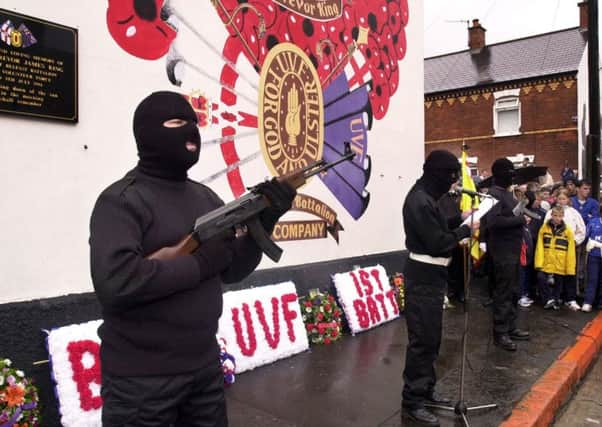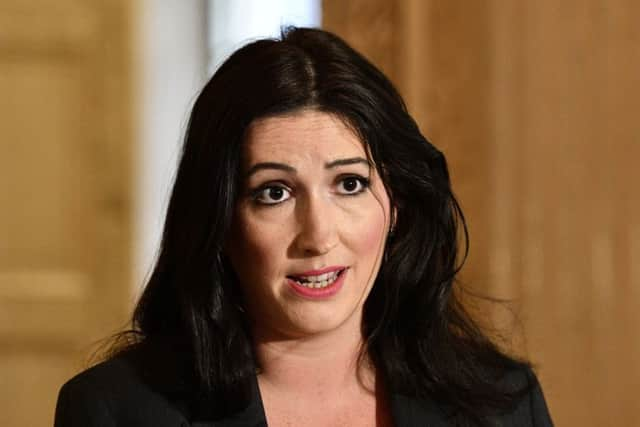NIO sifting 17,000 responses to legacy plan, with no end in sight


The republican party this week accused the government of “delaying tactics” over its Stormont House Agreement consultation, which closed in October last year after five months.
Both the DUP and South East Fermanagh Foundation (SEFF) have hit back, with the latter saying Sinn Fein appears to be attempting to “bulldoze” aside the consultation process altogether in order to see the controversial plans forced through.
Advertisement
Hide AdAdvertisement
Hide AdThe Northern Ireland Office was asked by the News Letter if it could give a rough breakdown of how many responses were positive about the plans, and how many were negative, but it said officials are still analysing them, and gave no timeframe for how long this will take.


It also said it has no intention of publishing the consultation responses themselves.
The whole issue dates back to 2014 and the deadlock over implementing changes to the benefits system, which Sinn Fein had opposed.
The result was an agreement which covered everything from flags and parades to policing, as well as welfare.
Advertisement
Hide AdAdvertisement
Hide AdMuch of it dealt with how to deal with the Troubles’ fall-out, with proposals including:
A politically-independent “oral history archive” to gather Troubles stories, and a team of academics to produce a “factual historical timeline and statistical analysis of the Troubles”;
Plans to establish a Historical Investigations Unit with full police powers to replace the defunct HET, which will be expected to conclude all of its work into the massive backlog of unsolved murders within five years;
The creation of an Independent Commission on Information Retrieval (ICIR) to “enable victims and survivors to seek and privately receive information about the (Troubles-related) deaths”. The identities of the people giving the information to it would be withheld from the public and any information given would be “inadmissible in criminal and civil proceedings”.
Advertisement
Hide AdAdvertisement
Hide AdThe public consultation on the plans asked a string of questions about the bodies above.
However detailed proposals on two other key issues – the backlog of Troubles inquests and a Troubles pension – were not included in the consultation, with the government saying these are for a Stormont Executive to discuss.
Sinn Fein (tied to the IRA, which killed about 1,800 people, more than all other paramilitary groups combined) said it met the victims commissioner on Monday.
Afterwards it released a statement saying it had “expressed our concerns of the impact on victims who responded to the consultation in good faith only to be subjected to further delaying tactics by the British government”.
Advertisement
Hide AdAdvertisement
Hide AdIt said: “It is clear there should be no more delays to the implementation of those legacy structures [in the Stormont House Agreement].”
It said the lack of funding for legacy inquests “is not instilling any confidence among victims”, and added: “We also raised the issue of payments to all those injured as a result of the conflict.”
Kenny Donaldson, SEFF’s services director, stated: “The Provisional movement through Sinn Fein is demonstrating once again its contempt for the democratic process. A public consultation into legacy issues has taken place and we await the outcome of those responses...
“The NIO were clear in all public events they facilitated with SEFF the legacy structures will only proceed in the context of there being sufficient community confidence.
Advertisement
Hide AdAdvertisement
Hide Ad“Sinn Fein may seek to bulldoze through their agenda [with a] suggestion the consultation was an implementation process of a political agreement, but this is grossly inaccurate.”
The News Letter tried to establish how the 17,000 consultation responses stacks up against other large-scale government consultations.
But when a string of departments – health, education, agriculture, the Executive Office, and the Northern Ireland Office itself – were asked for what the biggest consultations they had run had been, all failed to provide an answer.
DUP HAS ITS SAY:
The News Letter has documented in detail objections to the proposals during the public consultation.
Advertisement
Hide AdAdvertisement
Hide AdThese have come from a wave of victims, parties, and other bodies – ranging from the Police Federation (which opposed a “parallel police service” for handling Troubles murders) to the Orange Order (which said ICIR reliance on “untested, anonymised information” risk making it “another vehicle to re-write history”).
DUP South Belfast MP Emma Little Pengelly said consultation responses are still being digested, and “it is important that the voice of victims is acted upon from that process”.
She said: “The DUP considers the best opportunity for justice to come from an investigatory team with full police powers. It is important that any new structures would be fair and proportionate, given 90% of deaths were caused by illegal terrorists, and there should be an end to witch hunts against those in the forces of law and order who acted bravely, honourably and appropriately.
“SF wish only to advance their own narrow agenda, but the needs of innocent victims must be addressed if we are to make make progress.”
INQUESTS:
Advertisement
Hide AdAdvertisement
Hide AdWhilst proposals on the Troubles inquest backlog did not form part of the legacy consultation, Sinn Fein last week continued its pressure for funding to be released to deal with the issue.
The News Letter had conducted a massive piece of research, published in May 2017, which showed that of the 94 people on this inquest list, at least 35 were in paramilitary groups.
A further breakdown showed a hugely-disproprtionate number of the outstanding inquests were into state-linked killings – with 51 of the 94 fatailities known or thought to have been killed by the state (although only around 10% of Troubles victims were killed by the state, many of them active paramilitaries).